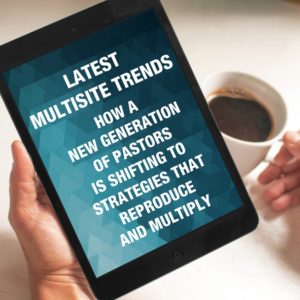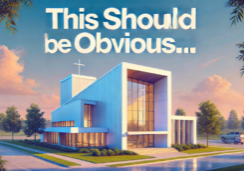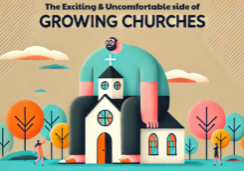3 Things We Now Know About Church Planting Momentum
[et_pb_section fb_built=”1″ admin_label=”section” _builder_version=”3.0.47″][et_pb_row admin_label=”row” _builder_version=”3.0.48″ background_size=”initial” background_position=”top_left” background_repeat=”repeat”][et_pb_column type=”4_4″ _builder_version=”3.0.47″ parallax=”off” parallax_method=”on”][et_pb_text admin_label=”Text” _builder_version=”3.9″ background_size=”initial” background_position=”top_left” background_repeat=”repeat”]
For many years, the common idea of evangelical church growth was centered around growing bigger – that is, envisioning more people coming through their doors. Some churches were starting new ones, and we can consider them the pioneers of the multisite movement. But the model has been changing rapidly over the last few years. More churches are planting new, smaller offshoots.
Their dream of growth might be seen as local; these churches are carefully choosing where they start a new campus. They’re intentionally training people within their existing congregation to eventually lead elsewhere.
Many pastors are leading the charge, but where is it heading? What are the results being seen in congregations?
In research we carried out in partnership with Leadership Network, recently published in a new eBook, faster annual growth comes with younger pastors (22% higher) and founding pastors (24% higher) than any other group.
Whether you’re a young or seasoned pastor, if one of your goals is to grow your church, then there might be some useful lessons to be learned from these pastors who are seeing greater conversions and higher attendance in their church plants and
Here are some key things to know about kick-starting momentum if you’ve plateaued or are yet to begin planning.
- Think multiplication over mega. Along with a vision to plant more churches/sites, these pastors are growing smaller churches into slightly larger small churches, and the rate of growth is greater.
- “Research affirms that starting new congregations – through either independent church plants or new multisite campuses – is a highly effective way to extend God’s kingdom work”
- Send out the best leaders you have to start a new campus, fearlessly letting go – God will bless your offering of “first fruits,” you’ll be fine without them, and the new campus will be so much better for having their gifts and energy!
- “Some leaders with theological or pragmatic biases against multisite models do invest heavily in church-planting residencies to send out leaders. But our research shows that multisite churches are much more likely to do so.”
- As in any vital relationship, trust between a pastor and congregation is critical to growth. This may be why founding pastors enjoy a higher growth rate. New pastors to older congregations may need time to build trust.
- “Church planters and campus pastors in their first 5 years at a church are 2.3 times more likely to have a vision to plant/launch than pastors who have been at the same church more than 10 years.”
One more helpful statistic from this report is that 83% of pastors under age 40 “have a future vision to plant/launch.”
“You can’t change the age of your pastor or whether that person is a founder or not. But it does help a leader understand why that other church in town appears to be growing faster.”
Regardless of where you fall in the age bracket, it might just be time to dive in and begin learning more about what younger churches and pastors are doing to create growth opportunities.

Learn more about Latest Multisite Trends
[/et_pb_text][/et_pb_column][/et_pb_row][/et_pb_section]









